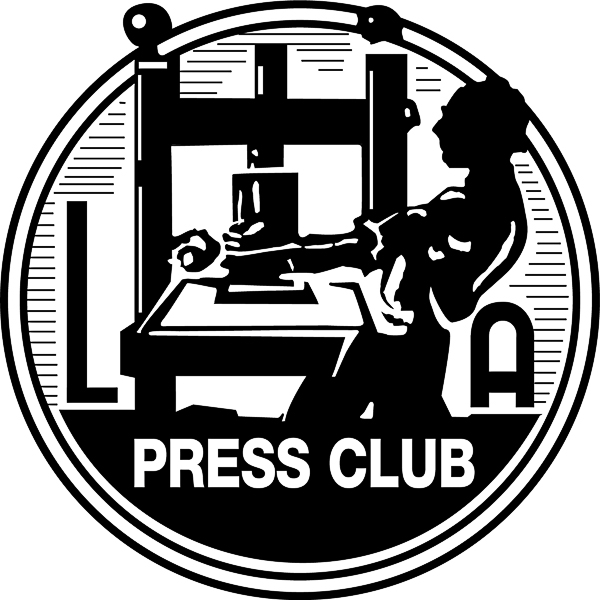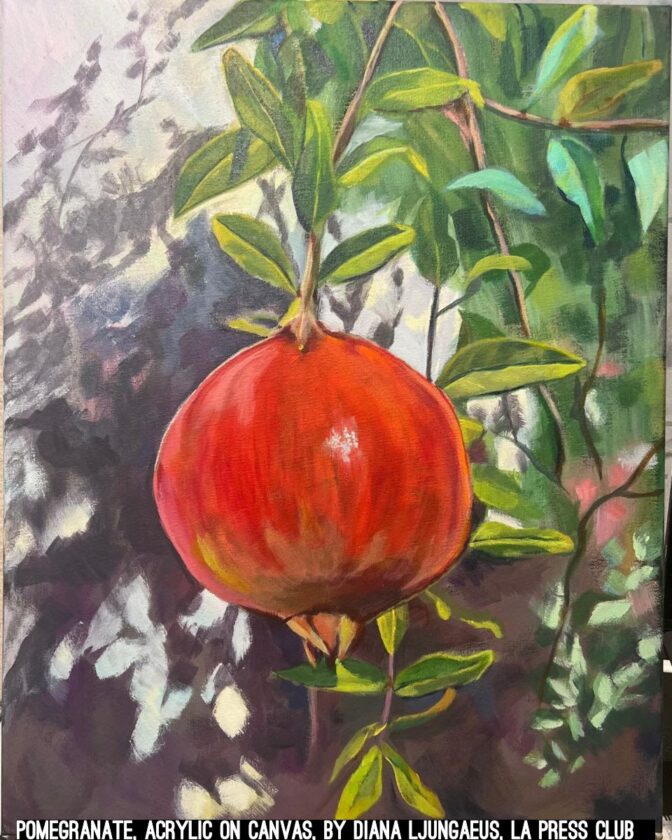The following are considerations when you cover protests in California where police may declare an unlawful assembly and order people to disperse. This is not a substitute for your newsroom policies or your own research. This is not legal advice, which can only be provided by a licensed attorney. Updated January 2022.
Click here to download a printable PDF version of this guide.
BEFORE YOU ARRIVE
Identify the law enforcement agency/agencies likely to have jurisdiction. While LAPD and LASD are the largest in our area and may provide mutual aid, there are many smaller jurisdictions and specialized units (ex: Santa Monica PD, LA Airport Police, UCLA PD, etc.).
Obtain contact information for the agency’s Public Information Officer (PIO). Large agencies often have a PIO on call 24/7 for emergencies (they appreciate lead time for general inquiries). If you anticipate covering organized protests in their area, reach out early to discuss arrival (potentially parking and where to keep your car away from activity) and exit plans.
Carry a form of press identification. “Credentials” are a complicated topic. They’re not the only factor that makes somebody press. Three entities tend to issue some form of ID: employer, press organization and law enforcement. If your company ID lacks useful details, contact us for suggestions (pressrights@lapressclub.org). LAPD and LASD passes require background checks and take several days at best. LA Press Club issues press IDs to members who verify they’re working journalists. At minimum, carry business cards and written work phone numbers (ideally a 24/7 newsdesk and/or corporate security desk). Freelancers should print (in case your phone fails) a letter of assignment. Also carry a government-issued ID like a driver license.
Carefully evaluate gear. Make a checklist to manage your go-bag and appropriate attire/shoes. Basic items include ear plugs, N95 mask (better: P100), sealed goggles (not swimming), water bottle, prescriptions and cash. Consider possible safety risks on your body: lanyards can snag or be yanked, makeup can interact with tear gas, many clothes can restrict evacuation. Leave valuables and bulky items at home. A “dummy” memory card can be handed over if threatened for recording. Seek expert advice on advanced PPE (gas masks, body armor, trauma kits). Just as important as having safety gear is knowing how to use it and keeping it in working order.
Your phone is a lifeline, protect it. Carry a backup battery pack. If it has sensitive information, consider turning off biometric access (fingerprint and face ID) and use encryption. Consider what would happen if your phone were lost or stolen (both data security AND getting home). If unfamiliar with the area, print a physical map and mark temporary features like security zones.
Tell your newsroom managers or trusted colleagues where you’ll be. Plan to check in at a specific time so they know you’re OK after. Make sure they have contact info for PIOs and an attorney you know will be reachable. Discuss risks, communications, and emergency plans.
Consider if you’re in over your head. Most protests are relatively peaceful. However, in rare situations where violence may occur, you must know your limits. Consider risks of personal health conditions (ex: if you have asthma, tear gas is especially dangerous) or just if you’re prepared to deal with physically demanding situations, aggression from protesters and police, multi-hour waits, and inclement weather. Consider if you should be working with experts in and out of your newsroom, including professional security consultants and on-site “backwatchers.”
ON THE SCENE
Establish contact with law enforcement early. Connect with a PIO or supervisor on the scene (write down their name). Ask the best place to go if unlawful assembly is declared. Front-line personnel can change over quickly, so if there’s confusion it can help to name your contact.
Be alert. Safety comes first. Identify multiple exit plans and meeting points. Use areas to the side/edges to avoid crossfire/clashes. Understand that in close proximity to demonstrators actively engaged in violence, law enforcement will likely prioritize eliminating and dispersing threats over determining your status as press. Consider how your appearance calls attention to you. Watch for potential hazards from both protesters (you may need to cover press insignia if you’re targeted) and police tactics (conversely, you may need to prominently display press insignia to help separate you from protesters). Along with 360° awareness, look up and below. Set a phone timer for every 15 minutes as a reminder to look around and reevaluate.
Safety over lighting. Understand the impact camera lighting/flashes can have on potentially violent demonstrators as well as law enforcement. Lighting in the middle of unrest can have a “moth to flame” effect and draw unwanted attention. Camera lights glaring at approaching law enforcement could make it impossible for them to see your credentials. Consider low-lighting situations and techniques, which may be optimal when covering unrest at night.
Work as a team. Write an emergency contact’s phone number on your arm. Use a buddy system and watch each other’s backs. Exchange contact info with others on the beat.
Listen for an order to disperse. If you want to leave, consider if blending into the crowd is the safest exit or not. If you want to stay, communicate with police and consider safe positions.
Be clear to front-line officers that you are press. Police need indications to know your role. Be professional. Clearly show credentials or other work ID. Vocalize you are “press” AND who you’re reporting for (be specific and give brief context, officers may not recognize outlets/call letters). Before reaching into a pocket or bag, explain you’re reaching for your press credentials.
Don’t interfere with police. Give a reasonable amount of room and don’t stand close behind them, especially during arrests. Don’t disrupt command posts. Be mindful of safety concerns.
Don’t participate besides newsgathering. Many newsrooms don’t allow employees to participate in protests, but it’s also true that press and activism can overlap at times. If you participate besides newsgathering or if you break any law, the police will not treat you as press.
IF SOMETHING GOES WRONG
If detained, say you are press and ask for a PIO or supervisor. Be polite. Keep recording.
If asked for your recording equipment, do not consent. Remind them you are a journalist, the items are owned by your company, and they must first contact your company’s attorney.
If arrested, contact a lawyer. Ideally, have a phone number in advance for one who will be reachable. If your newsroom doesn’t provide one, several groups may be able to help (sometimes free) or provide referrals. None can guarantee representation, but if you have an active concern we suggest looking into the organizations listed under the Resources tab on lapressclub.org, specifically “Legal Hotlines And Resources For Journalists In California.”
Ask your lawyer about “factual innocence” to clear arrest records. Even if no charges are filed, an arrest may be reported to the FBI and CA DOJ, which each keep separate records.
Seek mental health resources. Journalists can face risk of trauma and vicarious trauma.
FREQUENTLY ASKED QUESTIONS
Do I have a First Amendment right to remain at unlawful assemblies? Courts have tried to address related questions, but the time for a nuanced civil rights discussion is not on a skirmish line. In California, you may be protected by Penal Code §409.7 (created by Senate Bill 98).
What protections does PC §409.7 (a.k.a. SB-98) provide? In California, police can close a public area by declaring an unlawful assembly. PC §409.7 allows journalists to enter (or remain) when this happens at a “demonstration, march, protest, or rally,” with some limits. Specifically, journalists covering these events can’t be cited for failure to disperse or curfew violation. If detained, you can speak with a police supervisor. You can still be arrested for violating any other law, including obstructing an officer. Reciprocally, officers are prohibited from intentionally interfering with journalists. PC §409.7 does NOT allow journalists inside a command post.
Who is a “journalist” during an unlawful assembly? PC §409.7 protects “a duly authorized representative of any news service, online news service, newspaper, or radio or television station or network.” This is grounded in long-established precedents and explained in a memo on lapressclub.org. Protections should cover freelance, independent and student journalists.
The law does not require police credentials or permission, but practically you must identify yourself. Always carry professional identification in physical form (ex: work or LA Press Club ID, letter of assignment, etc.). Don’t rely on digital versions, as phones can lose power or reception.
Your conduct is also critical to demonstrate you are a working journalist. Our organization’s position is that “press” at a protest is strictly gathering news intended for public consumption, not participating in unlawful activity (other than observing/recording it), and not interfering with police. If you participate as a protester, you cannot expect police to treat you as a journalist. Being or posing as press is no excuse to break the law (just like being or posing as a police officer is no excuse to break the law), and we condemn this at protests as a safety threat.
What are PC §409.5(d) and PC §409.6(d)? These provisions of the California Penal Code allow journalists to be in closed areas during disasters (ex: wildfire or plane crash). Remember that if an officer at a disaster recommends you leave, you may be liable for your own safety.
What about crime scenes? California courts have held that these sorts of laws do not guarantee press access to a crime scene. Investigators may need to preserve evidence.
What is the Crespo Settlement? After the 2000 DNC, there was a lawsuit between several journalists and LAPD (technically, the City of LA). This case was settled between the parties, and the agreement applies to LAPD but not to other law enforcement agencies. Among other things, it established LAPD policies about “news media viewing areas” (a.k.a. “Crespo areas”).
What if I have more questions? Email pressrights@lapressclub.org.



